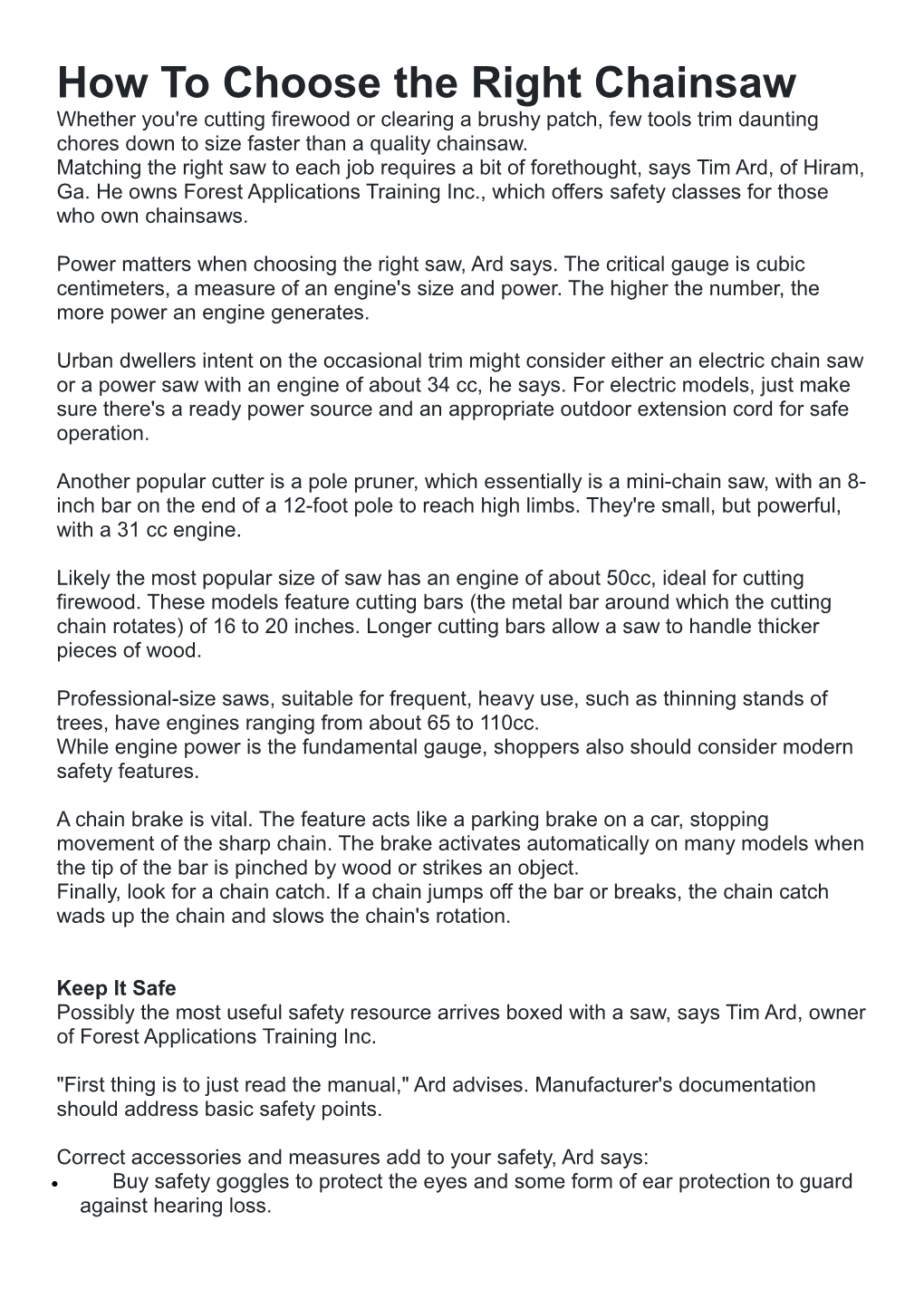How To Choose the Right Chainsaw
Whether you're cutting firewood or clearing a brushy patch, few tools trim daunting chores down to size faster than a quality chainsaw.
Matching the right saw to each job requires a bit of forethought, says Tim Ard, of Hiram, Ga. He owns Forest Applications Training Inc., which offers safety classes for those who own chainsaws.
Power matters when choosing the right saw, Ard says. The critical gauge is cubic centimeters, a measure of an engine's size and power. The higher the number, the more power an engine generates.
Urban dwellers intent on the occasional trim might consider either an electric chain saw or a power saw with an engine of about 34 cc, he says. For electric models, just make sure there's a ready power source and an appropriate outdoor extension cord for safe operation.
Another popular cutter is a pole pruner, which essentially is a mini-chain saw, with an 8-inch bar on the end of a 12-foot pole to reach high limbs. They're small, but powerful, with a 31 cc engine.
Likely the most popular size of saw has an engine of about 50cc, ideal for cutting firewood. These models feature cutting bars (the metal bar around which the cutting chain rotates) of 16 to 20 inches. Longer cutting bars allow a saw to handle thicker pieces of wood.
Professional-size saws, suitable for frequent, heavy use, such as thinning stands of trees, have engines ranging from about 65 to 110cc.
While engine power is the fundamental gauge, shoppers also should consider modern safety features.
A chain brake is vital. The feature acts like a parking brake on a car, stopping movement of the sharp chain. The brake activates automatically on many models when the tip of the bar is pinched by wood or strikes an object.
Finally, look for a chain catch. If a chain jumps off the bar or breaks, the chain catch wads up the chain and slows the chain's rotation.
Keep It Safe
Possibly the most useful safety resource arrives boxed with a saw, says Tim Ard, owner of Forest Applications Training Inc.
"First thing is to just read the manual," Ard advises. Manufacturer's documentation should address basic safety points.
Correct accessories and measures add to your safety, Ard says:
- Buy safety goggles to protect the eyes and some form of ear protection to guard against hearing loss.
- Buy good gloves. Also, sturdy leg chaps protect the lower extremities.
- Always wear sturdy boots to provide good footing and protection.
- Keep a sharp blade. "Most people don't realize when a chain is dull and they just keep pushing and pulling, but a chain should feed into the wood," Ard says. If a saw isn't eating away an inch of wood each second, have a repair shop sharpen the blade, or do it yourself with a sharpening kit.
